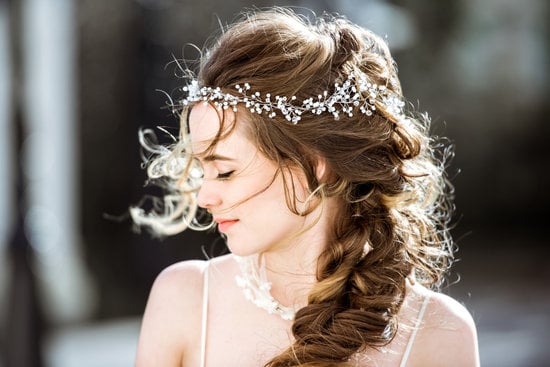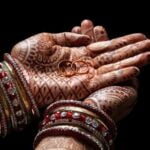When it comes to a wedding, one of the most anticipated moments is the procession down the aisle. It’s a moment that symbolizes the beginning of a new chapter and sets the tone for the rest of the ceremony.
However, for gay weddings, there may be questions about who walks down the aisle and what traditions are followed. In this article, we will explore the traditions and etiquette of gay weddings, including the evolution of gender roles and non-traditional procession ideas.
As societal attitudes towards same-sex marriage continue to evolve, so do the traditions associated with it. From the history of wedding processions to the role of family and friends, we will delve into how LGBT couples navigate through traditional norms while embracing inclusivity and acceptance. Whether it’s making decisions together or breaking down gender norms, gay weddings pave the way for more diverse and inclusive wedding traditions.
Join us as we examine who typically walks down the aisle at a heterosexual wedding, compare it to LGBT wedding traditions, and discuss how couples can embrace love and inclusivity in every wedding ceremony. From celebrating love to bridging gaps in traditional practices, this article aims to provide insight into navigating through wedding traditions with an open mind and heart.
History of the Wedding Procession
The history of the wedding procession is a long and storied one, evolving with society’s changing views on marriage and gender roles. In traditional heterosexual weddings, the procession typically consists of the bride being escorted down the aisle by her father, symbolizing the transfer of her care and protection from one man to another. This tradition dates back to ancient Roman times when marriage was more of a business transaction than a celebration of love.
As society has become more inclusive and accepting of LGBTQ+ individuals and relationships, the traditions surrounding wedding processions have also evolved. The question often arises: who walks down the aisle at a gay wedding? Unlike in traditional heterosexual weddings, there are no set rules or norms for same-sex wedding processions. Couples have the freedom to tailor their procession to reflect their own unique relationship and values.
Some same-sex couples choose to walk down the aisle together, symbolizing their equal partnership in marriage. Others may opt to be escorted by both parents, close friends, or other family members who hold special significance in their lives. There are also couples who choose not to have a formal procession at all, instead focusing on creating a more casual and relaxed atmosphere for their ceremony.
It’s important to recognize that every couple is different, and there is no one-size-fits-all answer to who walks down the aisle at a gay wedding. The evolution of wedding processions in LGBTQ+ ceremonies reflects society’s changing views on love and inclusivity, embracing non-traditional ideas and breaking down gender norms. Ultimately, what matters most is that couples feel supported and understood as they celebrate their love with those closest to them.
| Aspect | Description |
|---|---|
| Traditional Wedding Procession | Bride escorted by father |
| LGBTQ+ Wedding Procession | No set rules or norms; freedom for couples to customize |
| Evolution of Wedding Processions | Reflects changing societal views on love and inclusivity |
Who Typically Walks Down the Aisle at a Heterosexual Wedding
Traditionally, at a heterosexual wedding, the wedding procession follows a specific order. Here is the typical lineup for who walks down the aisle at a heterosexual wedding:
1. The Officiant: The officiant, whether it be a religious leader or a secular officiant, enters first and takes their place at the front of the ceremony space.
2. Grandparents: In some cases, the grandparents of the couple are escorted down the aisle to their seats by an usher or family member.
3. Parents: The mother of the bride is usually escorted down the aisle by an usher or groomsman, followed by the mother of the groom in some cases. They take their seats before the ceremony begins.
4. Wedding Party: Bridesmaids, groomsmen, flower girls, ring bearers, and other members of the wedding party follow next in pairs or individually depending on preference.
5. The Bride: Lastly, the bride makes her grand entrance and walks down the aisle accompanied by whoever she chooses-a parent, both parents, a relative or friend.
This traditional order showcases gender-specific roles and sets a clear distinction between who accompanies whom down the aisle. However, as times change and society evolves to be more inclusive and understanding of diverse relationships, these traditional roles are being redefined to accommodate all types of wedding processions-including those in same-sex marriages.
LGBT Wedding Traditions
In traditional heterosexual weddings, the wedding procession typically consists of the father walking the bride down the aisle, symbolizing the transfer of responsibility from her father to her soon-to-be husband. However, in same-sex weddings, there is no established norm for who walks down the aisle. This absence of tradition provides an opportunity for LGBTQ+ couples to create a wedding procession that is meaningful and significant to them.
For some same-sex couples, they may choose to walk down the aisle together, symbolizing their equal partnership and commitment to each other. This non-traditional approach reflects the shift in gender roles within a relationship and allows both partners to be equally represented in the wedding procession.
Others may opt for a more inclusive approach by having both sets of parents walk them down the aisle, emphasizing the support and love from both families. Additionally, some couples may choose to have close friends or family members accompany them on their walk down the aisle, further highlighting the importance of community and chosen family in their relationship.
Overall, same-sex weddings provide an opportunity to break free from traditional gender norms and create a wedding procession that truly represents the unique dynamics and love between the couple. It’s a chance for LGBTQ+ individuals to celebrate their identity, their love, and their commitment in a way that is authentic to them.
| LGBT Wedding Tradition | Details |
|---|---|
| Walking Down Aisle Together | Symbolizes equal partnership and commitment |
| Both Sets of Parents Walking Couple Down Aisle | Emphasizes support and love from both families |
| Close Friends or Family Members Accompanying Couple | Highlights importance of community and chosen family |
Breaking Down Gender Norms
In traditional heterosexual weddings, the wedding procession typically follows a set pattern with specific roles for the bride and groom. However, in same-sex weddings, there is more flexibility and opportunity to break down gender norms and create non-traditional wedding procession ideas. Many couples may wonder who walks down the aisle at a gay wedding and how they can make their procession unique and meaningful.
One non-traditional procession idea for a gay wedding is to have both partners walk down the aisle together. This symbolizes the equality of their relationship and their joint commitment to each other. Another option is to have each partner escorted down the aisle by their respective parents or loved ones, highlighting the support and love from both sides of their families.
For some couples, incorporating cultural or religious traditions into their wedding procession is important. In some cultures, there are specific customs related to wedding processions that can be adapted for same-sex weddings. For example, in Jewish weddings, the couple may be escorted by both parents under a chuppah, symbolizing their new home together as equals.
Ultimately, non-traditional wedding procession ideas should reflect the unique relationship of the couple getting married. Whether it’s walking down the aisle together hand-in-hand or being escorted by loved ones on both sides, same-sex couples have the opportunity to redefine wedding traditions and create a meaningful and inclusive procession that represents their love and commitment.
The Role of Family and Friends
Traditions and Expectations
In traditional heterosexual weddings, there are often clear expectations for who walks down the aisle. The father of the bride typically walks her down the aisle, while the groom’s mother is escorted to her seat before the ceremony begins. However, in same-sex weddings, there is no defined gender role for who walks down the aisle. This lack of tradition can lead to questions and uncertainties for couples planning their wedding procession.
Supportive Roles
In gay weddings, couples have the opportunity to reimagine and redefine these traditional roles to better reflect their own personal relationships and experiences. Many same-sex couples opt to have both of their parents walk them down the aisle, regardless of gender. Others may choose a close friend or family member to do so. The beauty of LGBT weddings lies in their ability to challenge societal norms and create new traditions that truly represent the couple’s support system.
Inclusivity and Acceptance
The inclusivity of LGBT weddings extends beyond just the couple themselves; it also encompasses their family and friends. It is important for loved ones to be supportive and open-minded when it comes to participating in non-traditional wedding processions. This can include honoring siblings, best friends, or mentors with roles traditionally reserved for parents or other relatives. The key is to prioritize love and inclusivity over rigid adherence to outdated customs.
By embracing inclusive wedding traditions, LGBT couples not only celebrate their love authentically but also promote acceptance within their social circles. In doing so, they create a more inclusive environment for future generations of couples, reaffirming that love knows no boundaries or limitations.
Celebrating Love
When it comes to a gay wedding, the decision of who walks down the aisle is not necessarily dictated by gender norms or traditional expectations. In fact, many same-sex couples choose to make this decision together, based on their personal preferences and what feels meaningful to them as a couple. This collaborative approach to the wedding procession not only reflects the equality and partnership within the relationship, but also emphasizes the shared commitment and love between the two individuals.
In many cases, both partners may choose to walk down the aisle together, symbolizing their joint journey into marriage. This modern approach to the wedding procession is a beautiful representation of their unity and equal standing in the relationship.
Alternatively, some couples may opt for a non-traditional procession that includes both partners walking down the aisle with both of their parents, siblings or close friends. This inclusive gesture highlights the importance of family and friends in their lives, as well as their support for each other’s union.
Ultimately, the decision of who walks down the aisle at a gay wedding is deeply personal and reflects the values and dynamics of each individual couple. By making this decision together, couples can create a meaningful and symbolic moment that truly represents their love and commitment to each other.
Regardless of who walks down the aisle, what matters most is that this part of the wedding ceremony is a reflection of inclusivity and support from all those who are important to them.
- Walking down together with arms linked
- Both partners individually walking down with their respective close family members
- Walking down together with parents or siblings
Bridging the Gap
Challenging Traditional Norms
In the past, traditional wedding processions had strict rules regarding who walks down the aisle at a heterosexual wedding. The father of the bride typically escorted her down the aisle, while the mother of the groom walked with him. However, as society has evolved and become more accepting of LGBTQ+ relationships, these norms are being challenged. Couples are now redefining and creating their own traditions, including deciding who will walk down the aisle in their wedding ceremony.
Embracing Inclusivity
In a same-sex wedding, there are no set rules about who should walk down the aisle. This provides an opportunity for couples to be inclusive and creative in their procession. Some couples choose to walk down the aisle together, symbolizing equality in their relationship. Others may have both of their parents escort them, regardless of gender, reflecting a unified and supportive family unit.
Supportive Friends and Family
For many couples, having close friends or family members walk them down the aisle is a meaningful way to include loved ones in their special day. This may involve siblings, grandparents, chosen family members, or even children walking with them.
These non-traditional procession ideas not only celebrate love but also affirm the importance of support and inclusivity within LGBT weddings. Ultimately, who walks down the aisle at a gay wedding is a decision that reflects each couple’s unique journey and values.
Conclusion
In conclusion, the traditions and etiquette of gay weddings have evolved over time to reflect the changing attitudes towards gender roles and inclusivity. While the history of wedding processions has been rooted in traditional heterosexual norms, the evolution of LGBT wedding traditions has opened up new opportunities for non-traditional procession ideas.
It is important to recognize that love knows no bounds, and every couple – regardless of sexual orientation – should have the freedom to create a meaningful and inclusive wedding ceremony.
The question of who walks down the aisle at a gay wedding has sparked conversations about breaking down gender norms and embracing non-traditional roles. With the support of family and friends, couples are empowered to make decisions that reflect their unique love story. Inclusivity in wedding traditions is essential to creating an environment where all couples feel seen, celebrated, and supported as they take this significant step in their journey together.
Ultimately, every wedding ceremony is a celebration of love, commitment, and unity. By embracing inclusive and accepting wedding traditions, we can bridge the gap between past traditions and modern values. It is through this embrace of love and inclusivity that we can create ceremonies that truly reflect the diversity and beauty of all relationships. Love should always be at the heart of every wedding, regardless of who walks down the aisle or how the procession unfolds.
Frequently Asked Questions
Do You Walk Down the Aisle at a Gay Wedding?
In a gay wedding, the concept of walking down the aisle can vary depending on the couple’s preferences. Some couples may choose to walk down the aisle together, while others may opt to walk separately or with family members or friends.
What Do You Call Bridesmaids in a Gay Wedding?
In a gay wedding, bridesmaids can be referred to as “groomsmaids” or simply as attendants. This allows for more inclusive language and acknowledges the unique dynamics of a same-sex wedding.
Who Walks the Man Down the Aisle in a Wedding?
Traditionally, the role of walking the man down the aisle falls to a family member, such as a parent or sibling. However, in modern weddings, there is flexibility in this tradition and some grooms may choose to walk alone, with their partner, or with another meaningful person in their life.

I have been involved in marriages for over 20 years helping couples and singles understand more about them.





